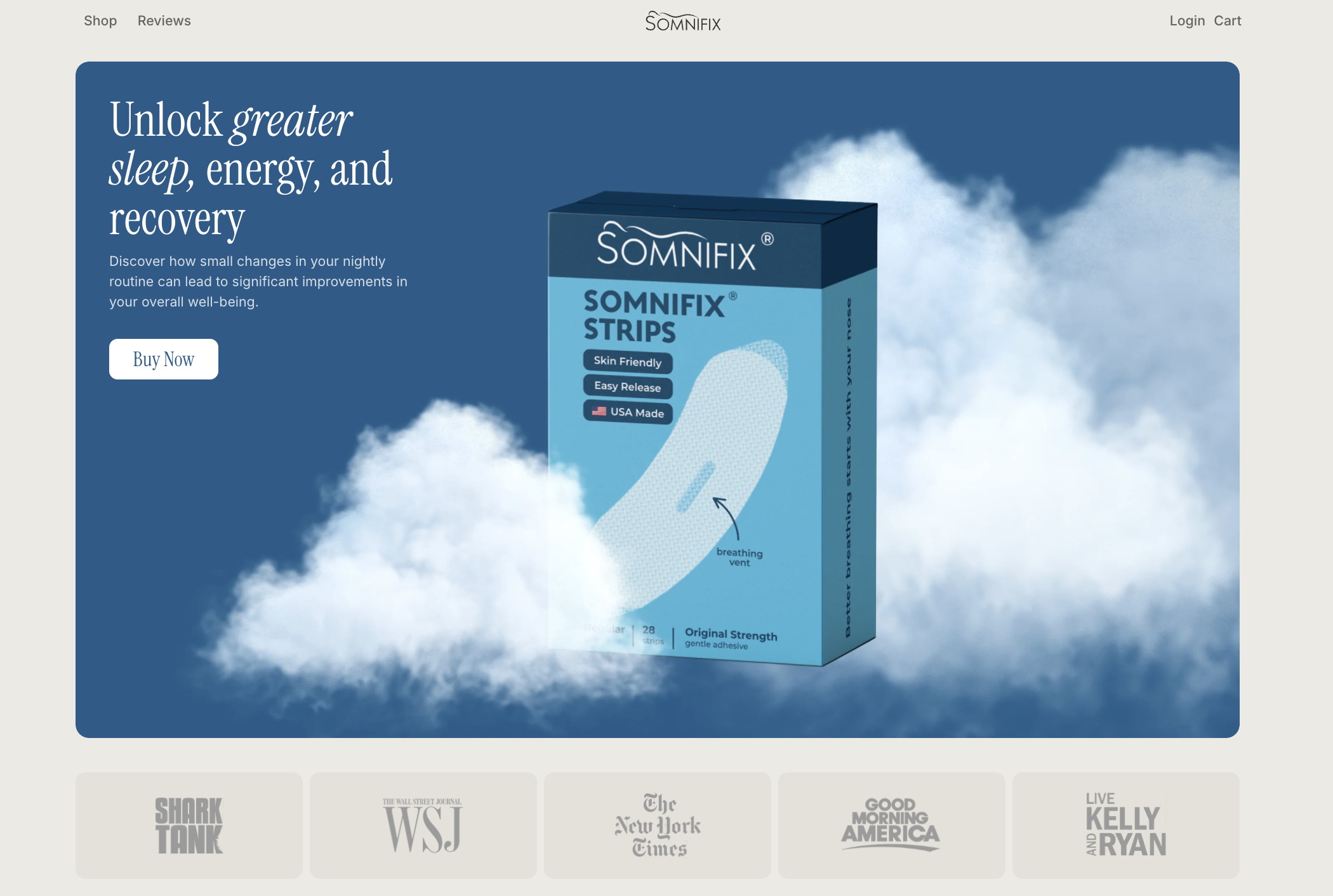Key Takeaway
Through a combination of highlighting the value of larger product variants and introducing a frictionless mobile checkout process, SomniFix increased its average order value by 27%, its average revenue per user by 23%, and its subscription share by 20%.
Client Overview
SomniFix is a direct-to-consumer brand that offers anti-mouth-breathing strips designed to promote better sleep through nasal breathing. The product is available in three pack sizes, with Subscribe & Save options for the two largest sizes.

Opportunity Background
Most purchases were concentrated on the smallest pack due to its default pre-selection and faster path to checkout. Users often overlooked the cost-effectiveness of larger packs and were unaware of the Subscribe & Save option, especially on mobile.
Solution
We redesigned the product detail page to highlight the three-pack option, setting it as the default selection and displaying a clear price-per-unit breakdown to better communicate value. To increase the subscription rate, the new layout directs users to the lowest-cost Subscribe & Save option.
To counteract any potential increase in price sensitivity or drop-offs due to higher default prices, we introduced a double-tap-to-checkout feature on mobile devices. This UX improvement mimics natural touch behavior, reducing friction and helping to maintain conversion rates.
Results
The updated variation resulted in a 27% increase in average order value, a 23% increase in average revenue per user, and a 20% increase in subscription rate. Although the conversion rate dropped slightly by 3%, this change was not statistically significant and was offset by a 16% increase in mobile transactions, which were driven by the improved checkout experience.